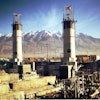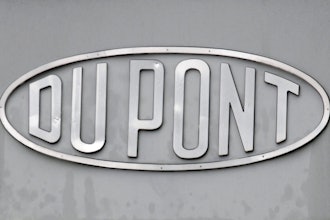RIVIERA BEACH, Fla., (PRNewswire) — Overall, food safety is a national concern with nearly 50 million Americans becoming ill from eating foods contaminated with Salmonella, Listeria monocytogenes, Escherichia Coli and Staphylococcus aureus as well as mold, yeast and viruses.
Bringing the issue into sharp focus is the recent recall crisis at Blue Bell Creameries, which has tested positive for Listeria monocytogenes at several locations. Last week the country's third largest ice cream brand, recalled all of its ice cream and other products from stores in more than 20 states. It's the second time in recent months that an ice cream company has recalled all of its products over listeria, a bacteria commonly traced to milk and soil.
In the Blue Bell recall, so far eight cases of listeriosis have been documented and three fatalities reported.
According to Florida-based RGF Environmental, many contaminants found in milk products can be eliminated through a combination of effective plant cleaning and sanitation procedures along with plant air-purification systems. Industry studies have proven that airborne pathogenic contamination of food products at the processing level is a safety concern, and in some cases is the major cause of microbiological contamination.
"Odors, air pollutants, VOCs (chemical odors), smoke, mold, bacteria and viruses are all plant air issues," said Dr. James Marsden, a national leading scientist in the field of food safety for the past 30 years. "HVAC safety and purification systems as well as systems for plant areas with no air ducts are critical components for a processor's overall food safety program."
Bill Svec, RGF Vice President of Water and Food Products, routinely employs two types of systems for air treatment in food plants.
Svec said one highly effective product is a Commercial PHI Unit that is mounted directly into the plant's air conditioning and heating system, a location where most sick building syndrome issues are born.
"When the HVAC system is in operation, the Commercial PHI Unit creates an advanced oxidation process consisting of hydro-peroxides, ozonide ions, super oxide ions and hydroxide ions," said Svec. "All are friendly oxidizers that revert back to oxygen and hydrogen after the oxidation of the pollutant."
Svec said if there are no air ducts, which is typically the case in most processing facilities, RGF recommends the installation of REME-ATS wall mount units designed for the cubic footage of the plant space as well as the type of application.
RGF, the U.S. patent holder for PHI-Cell® Technology, also has over the last 20 years installed treatment systems for meat, dairy and fruit and vegetable processors. Considered a breakthrough in food processing technology, the PHI technology can provide non-chemical, anti-microbial treatment, and protect products from human error or other cross contamination events, which may have occurred earlier during the process.
The PHI technology has been validated for control of Salmonella, Listeria monocytogenes, Escherichia Coli O157:H7 and Staphylococcus aureus, as well as mold, yeast and viruses.






















